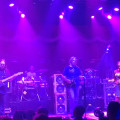This week, especially Friday, you will hear the term R Star. It’s also called R-Star or R*. Twitter / X may call it #rstar. R Star is a rarely-heard wonky economics concept. We’ll offer some basics here.
#SpoilerAlert – Think #Goldilocks
Ok, here goes.
#FederalReserve Chairman Jerome #Powell is scheduled to speak Friday at a retreat in #JacksonHole Wyoming. The investing world is anxious to know if #TheFed will start cutting interest rates sooner (late ’23 and/or ’24) or later (no cuts until 2024 or even 2025). Powell’s #jHole speech is expected to shed light on that question through a discussion of R Star.
R Star is the interest rate that would exist if the economy was humming along in a happy equilibrium. By happy equilibrium, we mean that #unemployment and #inflation would both be low and at levels that can be sustained long-term. Companies and individuals could borrow money from banks at rates that can be sustained for a long time.
Equilibrium naturally implies that the #Fed is not using high interest rates as a tool to cool down an overheated economy, nor using low interest rates to stimulate a slow economy.
R Star is a theoretical interest rate. It’s not an observable stat, like the #FedFundsRate or #CPI. It’s the interest rate believed to be the rate that supports a happy equilibrium. People’s opinions may differ on that theoretical level. Right now the opinion that matters is #jpow Jerome Powell’s.
#LasVegasTopPicks guess (and that’s all it is) is that Powell will suggest or imply that interest rates need to stay high for several more months in order to eventually attain a suitable R Star by cooling inflation more. We will all find out together Friday.
We hope this helps.




